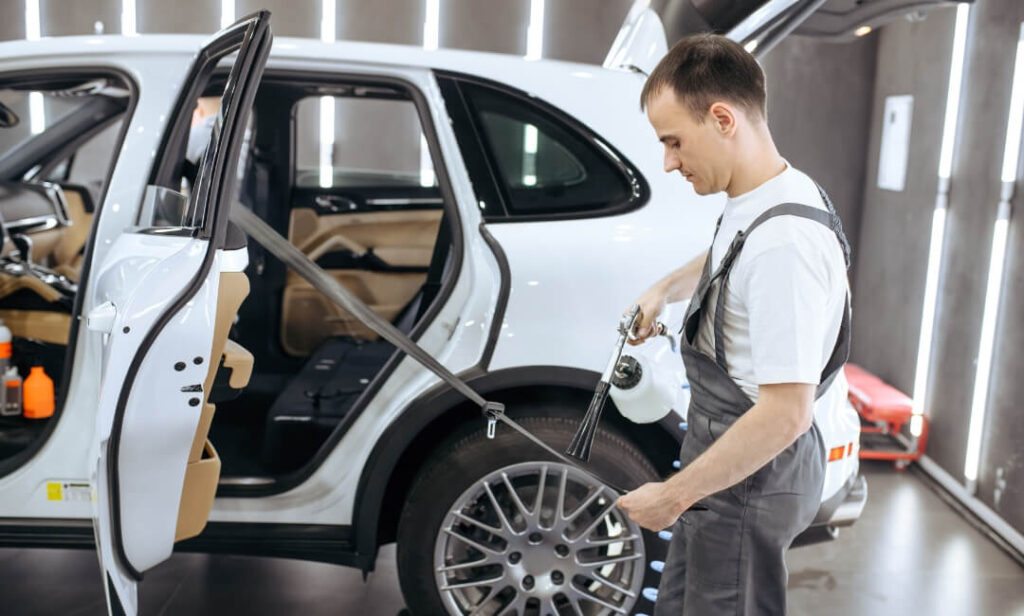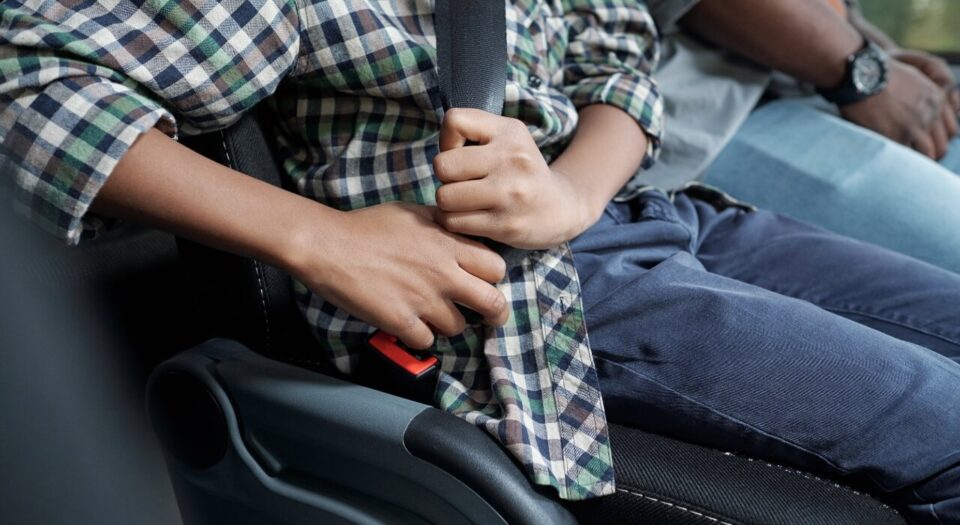When it comes to ensuring your safety inside a vehicle, seat belts are one of the most important features. Sure, you need advanced safety features like the Ford Blue Cruise and others to keep you secure. However, the only thing that keeps you secure in your seat and reduces the risk of any injury during a crash is a seat belt.
Thus, when buying a vehicle, especially a used one, you need to take a closer look at its seat belt. The effectiveness of a seat belt is ensured by the webbing materials used to build it. The quality of the webbing materials determines the quality of the entire seat belt system and the level of security it can offer.
In layman’s terms, you simply should not buy a vehicle just because it features an iconic car logo, has a box-shaped body, and more. Internal safety and security are equally important as external ones. Thus, always ensure you are buying a ride that comes with the right seat belt webbing and can keep you safe no matter what the situation.
To help you understand better, we bring you this guide that will tell you everything about seat belt webbing, from its types and consideration factors to its testing and maintenance.
Seat Belt Webbing
The seat belt webbing is the woven strap part of the belt, which makes up the main part of your car’s seat belt. It is generally made of strong and thick fabric that can withstand high levels of force during an accident.
The type of webbing a seat belt features can make a huge difference in how well it performs. Therefore, never cheapen out on the quality of the seat belt.
If the vehicle you like somehow features a seat belt that is not up to the quality standard you desire, you can always have it changed. However, to be able to do that, you need to make yourself familiar with the different types of seat belt webbing you can get your hands on.
- Polyester Webbing
It is the most common type of webbing used in vehicle seat belts. This one is strong, durable, and resistant to stretching, UV rays, and moisture, making it an ideal choice for all kinds of weather conditions.
- Nylon Webbing
This type of webbing is also strong and durable but comes with a bit more stretch compared to polyester. As it provides a bit more give during a crash, helping to reduce the impact on your body, it can be beneficial in serious situations.
- Kevlar Webbing
If you want nothing but high-end security inside and out of your ride, then Kevlar Webbing is for you. Kevlar is an extremely strong material that is known for its use in bulletproof vests. Its seat belt webbings are highly durable and resistant to cutting and abrasion. It is surely the best in terms of safety; however, it is also expensive compared to the other two types.
Different Factors To Consider When Choosing The Seat Belt Webbing
Suppose you are not satisfied with the webbing quality of the seat belt of the car you currently own. Surely, you cannot throw away an entire vehicle simply because one of its features is not up to the mark you desire.
Instead of sulking about it, what you can do is change it. That’s right, it can be like one of those maintenance upgrades that you keep performing on your ride from time to time to keep it in good shape. Only this time it will be about seat belts, not the oil change dealership vs Jiffy Lube.
But before you go ahead and do the entire changing process yourself, or have a professional do it for you, you need to understand how to choose the right seat belt webbing.
Below, we have listed some crucial factors that you need to consider when choosing a seat belt strap.
- Strength
Make sure the webbing you choose can withstand a significant amount of force during a crash. Go for the strap that meets or exceeds the safety standards set by the National Highway Traffic Safety Administration (NHTSA).
- Durability
The webbing should be able to handle wear and tear over time. It should be resistant to cutting, fraying, and abrasion. This is the only factor that will ensure your seat belt’s longevity.
- Stretch
Do not go for a product that offers too much or too little stretch. Opt for something with a small amount of give, as that can help absorb some of the impact during the crash.
- Weather Resistance
The seat belt harness material should be able to withstand exposure to exterior elements like UV light, moisture, and temperature extremes.
- Comfort
The seat belt is going to be in contact with your body, so its comfort is a necessity. Thus, look for something that is smooth, does not hurt, or does not cause irritation to your skin.
How To Test Seat belt harness material?
With the help of all the crucial buying factors, you can easily get the seat belt that suits your requirements. However, the purchase cannot be finalized until you test it.
Confused? Let us explain.
It is highly important to test seat belt fabric to ensure it meets the ideal safety standards. The good thing is that you can perform most of the tests by yourself with some regular tools and some assistance. And if you like, you can have your car-fanatic friends join the fun and together experiment and find out the best seat belt harness with the help of the tests mentioned below:
- Tensile Strength Test: This test measures how much force the fabric can withstand before breaking. Simply pull the webbing until it snaps, and record the amount of force exerted.
- Abrasion Resistance Test: With the help of this test, you can simulate the wear and tear the webbing will experience over time. Simply rub the webbing against a rough surface to see how well it holds up.
- UV Resistance Test: Under this test, expose the seat belt fabric to UV light and see how it reacts. If it is UV-resistant, it will not degrade or weaken when exposed to sunlight for a prolonged period of time.
- Moisture Resistance Test: In this test, expose the fabric to moisture and see how it reacts. If the fabric does not weaken or turn moldy when exposed to rain or humidity,.
4 Easy Seat Belts Maintenance Tips

You can buy yourself the best and most expensive seat belt webbing, but it is of no use if you do not keep it in good shape. All the parts of an automobile, from the engine and exterior to the car seats, dashboard, and seat belt, need proper maintenance in order to be in good shape for a long time.
Without proper care, even the best restraint webbing can not serve you right. Thus, you need to take extra care of your safety belt like you would with your car engine, brake pads, and other parts. Below, we have some easy maintenance tips that can ensure you can rely on your current seat belt for years to come.
- Regular Inspections – Check your seat belt regularly for any signs of wear and tear. You can make it a ritual that you can perform once a week.
- Cleaning – Keep the webbing clean. Use a damp cloth to wipe it down. Avoid using harsh chemicals that could damage the material.
- Avoid Using Sharp Objects – Keep sharp objects away from the fabric to prevent any cuts and tears.
- Proper Storage – If you will not be using your vehicle for a long time, make sure you store it properly. Ensure your ride is not constantly exposed to sunlight, rain, and other things, because such frequent and long exposure to UV light and moisture can damage the seat belts.
How To Replace The Seat Belt Webbing?
Over time, your seat belt will begin to show signs of wear and tear, indicating the need for replacement. Generally, you can do the seat belt fabric replacement by yourself. Just follow the steps we have mentioned below:
Note: If you want detailed guidance on choosing and replacing seat belt webbing, consider consulting resources that specialize in vehicle safety components.
- Purchase Replacement Webbing – Buy a new webbing, but ensure it offers all the features you desire and meets the safety standards as instructed by the government.
- Remove The Old Webbing – Carefully remove the old strap from the seat belt mechanism. You can always refer to your owner’s manual for help.
- Attach New Strap – Follow your car’s owner’s manual to attach the new strap. The task can take time if you are doing it for the first time. If you feel stuck, ask for help from someone who is knowledgeable about the matter.
- Test The Belt – After placing the new belt, test it to confirm its proper operation. Pull on the webbing to ensure it is securely attached and that the retractor mechanism is functioning the right way.
For your safety, selecting the appropriate seat belt webbing is essential. You can keep yourself safe in your car by choosing wisely if you know the different kinds of webbing and the factors to consider. To guarantee that your seat belt webbing stays in excellent shape, don’t forget to routinely inspect and maintain it.
To protect yourself, replace the webbing right away if you see any damage. When your seat belt is fastened correctly, you may drive with assurance, knowing that you are safe.

